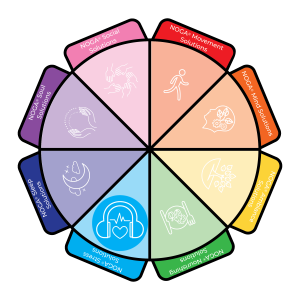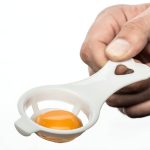Resourcing For Safety And Stability
 Now that we’ve gone all the way around the “WOW,” I would like to poke around the wheel and discuss various aspects of wellness in the upcoming installments. Here, we’re visiting the “Stress Solutions” wedge of our wheel. In this article, we will be focusing on the concept of “Resourcing” since it is on my mind while I am preparing a presentation for the annual NEFESH Conference, January 4-8, 2023, in New Jersey.
Now that we’ve gone all the way around the “WOW,” I would like to poke around the wheel and discuss various aspects of wellness in the upcoming installments. Here, we’re visiting the “Stress Solutions” wedge of our wheel. In this article, we will be focusing on the concept of “Resourcing” since it is on my mind while I am preparing a presentation for the annual NEFESH Conference, January 4-8, 2023, in New Jersey.
This year I am honored to be presenting with my dear colleague, Rozi Wax. The workshop title is: “Resourcing Your Clients – A Multiple Modality Toolbox for Early Trauma Work.” From a therapeutic or psychological perspective, what is Resourcing? A resource is anything a person uses when in distress that can calm, settle, strengthen, or center him or herself. Resources can be from within the person, such as thinking of a pleasant memory in a relaxing location, meditating, using one’s creativity, etc. Or they can also be from the outside, such as being with enjoyable people or joining in a pleasant activity.
The reason why our “toolbox” is for early trauma work, is that the client needs support and stability while “slaying their inner dragons.” Preparing the person with these tools and practices prepares him for the heavier work ahead, which may involve discussing the traumatic themes and experiencing strong feelings and sensations. In the early phases of work before getting too deep into discussing what occurred, and activating the person’s, nervous system response, it is strongly advised to stabilize them first with resourcing. Through resourcing, we provide tools and resources to develop a sense of safety so that when the client has the ability to speak about the issue, he or she can contain and experience their strong feelings without harm.
These techniques are found in many modalities, but specifically in psychosensory therapies such as EMDR, Somatic Experiencing (SE), Havening, Sensorimotor Psychotherapy, TFT (Thought Field Therapy), EFT (Emotional Freedom Technique), NLP (Neuro-Linguistic Programming), etc. When clients have these resources, they can feel stable and begin to speak about and work through their issues. As the person becomes activated again, he stabilizes again. Depending on the modality, this process may repeat a few times until the intensity of the feeling diminishes. In SE, slowing things down to meet the nervous system needs of the client is called “titration.” This is similar to titration in medication dosing to allow the patient’s system to acclimate to the proper amount of medication.
Resourcing can include grounding exercises, meditation exercises, breathing techniques, sensory and somatic tools, self-soothing touch, etc. My website contains many techniques and free resources that my clients use regularly. These tools and lifestyle enhancements are surprisingly simple and enjoyable. People are surprised that resourcing can be simple and so effective. It could be as easy as calling a friend or even imagining a favorite person or place. It could be thinking about a vacation that you’ve been on, while in your mind’s eye you’re describing every sensory detail. You’d be surprised how profound regular practice can be for overall well-being!
CLICK HERE to enjoy my Micro Self-Care A-Z poster which is always free to download. It has 26 activities you can start doing to become calmer, more present, and better resourced to face all of the challenges of our brave new world.
CLICK HERE for The Breathing Contest™
CLICK HERE for The Beginner’s Meditation on the Breath™
Happy Chanukah or whatever you celebrate.
We love hearing from you, please feel free to leave your comments below.
With Gratitude,
Rus Devorah


